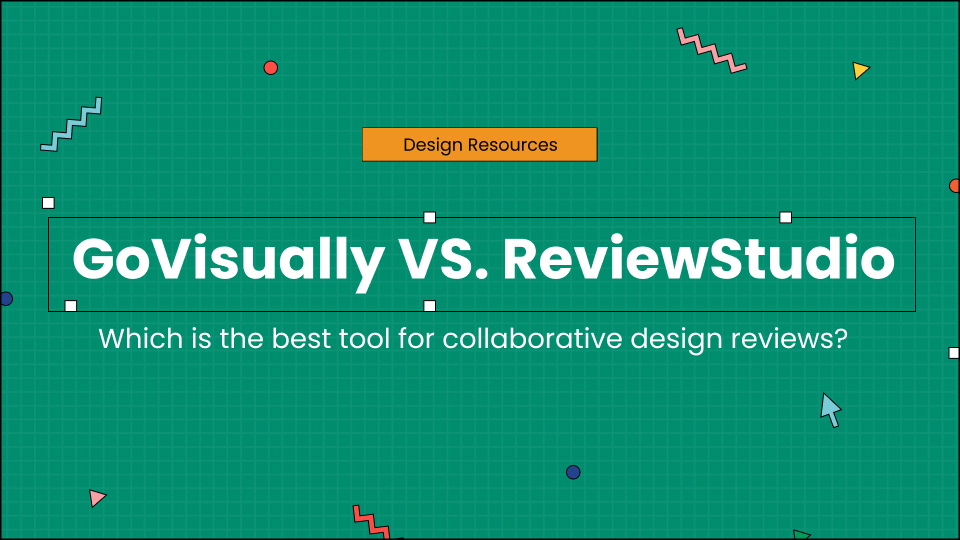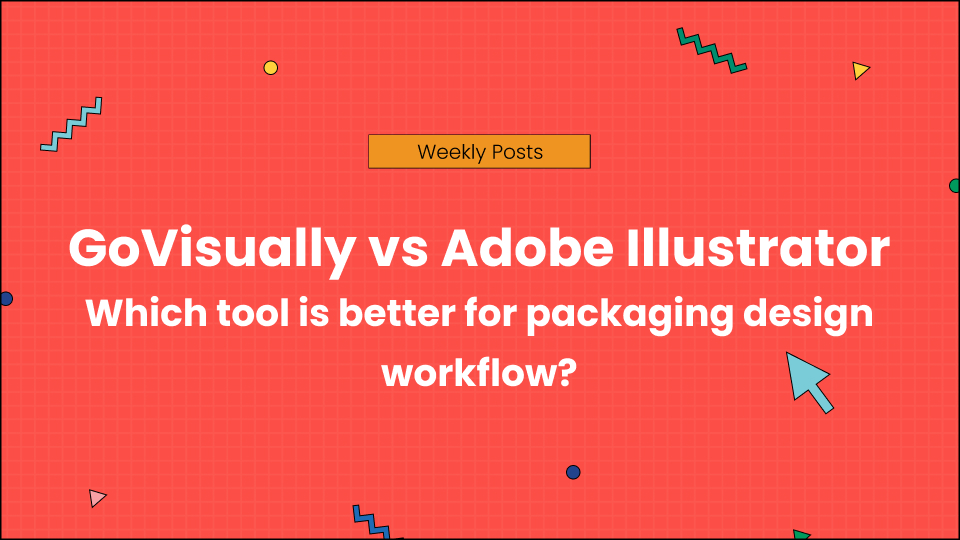Imagine running a business where a simple label error could result in a $200,000 fine or even imprisonment.
And no, this isn’t a hypothetical scenario–it’s the reality faced by companies in Canada dealing with strict labeling regulations.
This is a worldwide challenge; in Australia, 81.3% of non-compliance cases in 2020 originated from labeling mistakes. The key problem areas were improper nutritional details and ingredient lists.
These stats make it clear that maintaining label compliance is no easy feat, for any business. However, it’s not all doom and gloom. AI has brought a ray of hope to the label compliance industry.
A recent Moody’s survey shows that 34% of companies are already using AI to manage this complex regulatory environment. Intelligent, data-driven solutions are the new norm for businesses aiming to ensure accuracy, avoid costly penalties, and maintain consumer trust.
Read on to know all about how AI is changing the game for labeling and packaging industries.
Table of Contents
Understanding AI for label compliance
Recent developments in AI have brought sweeping enhancements to how packaging and labeling industries work. The most obvious benefits are better efficiency, accuracy, and compliance with regulatory standards.
First of all, AI-powered systems automate the process of checking label compliance. It suggests the text size, positioning, and overall design adhere to both regulatory and brand guidelines.
As a result, there’s less human error, and all necessary information is accurately presented on labels.
Plus, AI maintains compliance with regulatory requirements across different regions with the help of continuous monitoring and validation of labels. Businesses also benefit a great deal, as real-time auditing quickly identifies and rectifies any compliance issues and reduces the risk of penalties and recalls.
AI systems are great at working with data–these systems analyze label content in depth, including ingredient lists, nutritional information, and claims, so that they meet regulatory standards.
The growing need for AI in label compliance
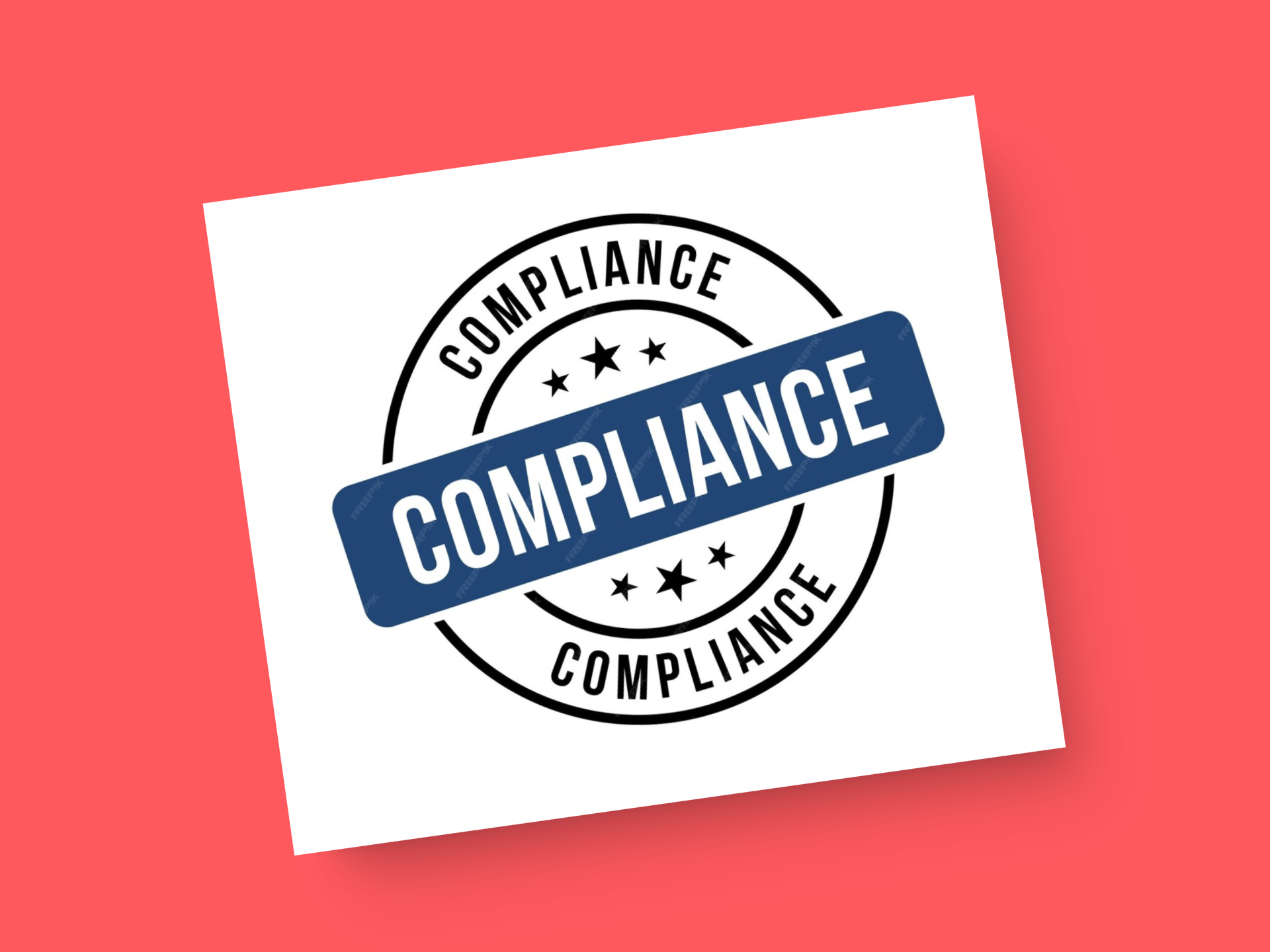
The label and packaging industry is at a turning point where traditional compliance methods are becoming increasingly inadequate.
1. Regulatory complexity
The regulatory landscape for labels and packaging is becoming quite pretty complicated. Take the food industry, for instance. Recent years have seen the introduction of new requirements for allergen labeling, nutritional information, and environmental claims. The EU’s Farm to Fork Strategy, part of the European Green Deal, is set to introduce even more strict labeling requirements related to nutrition and sustainability.
The challenge is equally demanding for pharmaceutical companies. The FDA’s ongoing push to improve drug safety has paved the way for more detailed labeling requirements. This includes the need for updated safety information and clearer instructions for use.
These regulatory changes don’t exist in a vacuum. If you’re a company selling in different countries, you might need to comply with multiple sets of regulations at once.
2. Global market challenges
Suppose you’re a company trying to sell your amazing new snack across or gadget all around the world. Sounds great, right? Well, not so fast. Each country you want to sell in has its own set of rules about what needs to be on that little sticker, and boy, are they picky!
- In the US, it would have to be compliant with the FDA labeling requirements.
- In the EU, it will have to meet the EU Food Information to Consumers Regulation requirements.
- If it’s acceptable in Japan, its marketing would also require compliance with the Food Labeling Act.
Each country has its own frameworks for writing and placing the labels for the citizens. And following them can be daunting, as each label takes 2-6 weeks of work. That’s a lot of time and effort for something most people barely glance at in the store!
Here’s where things get interesting.
Compliance AI tools like GoVisually can juggle all these different rules at once. It GoVisually dives into different regulatory frameworks to specify labeling requirements, including ingredients, nutritional information, and allergens, which varies y across based on the regions.
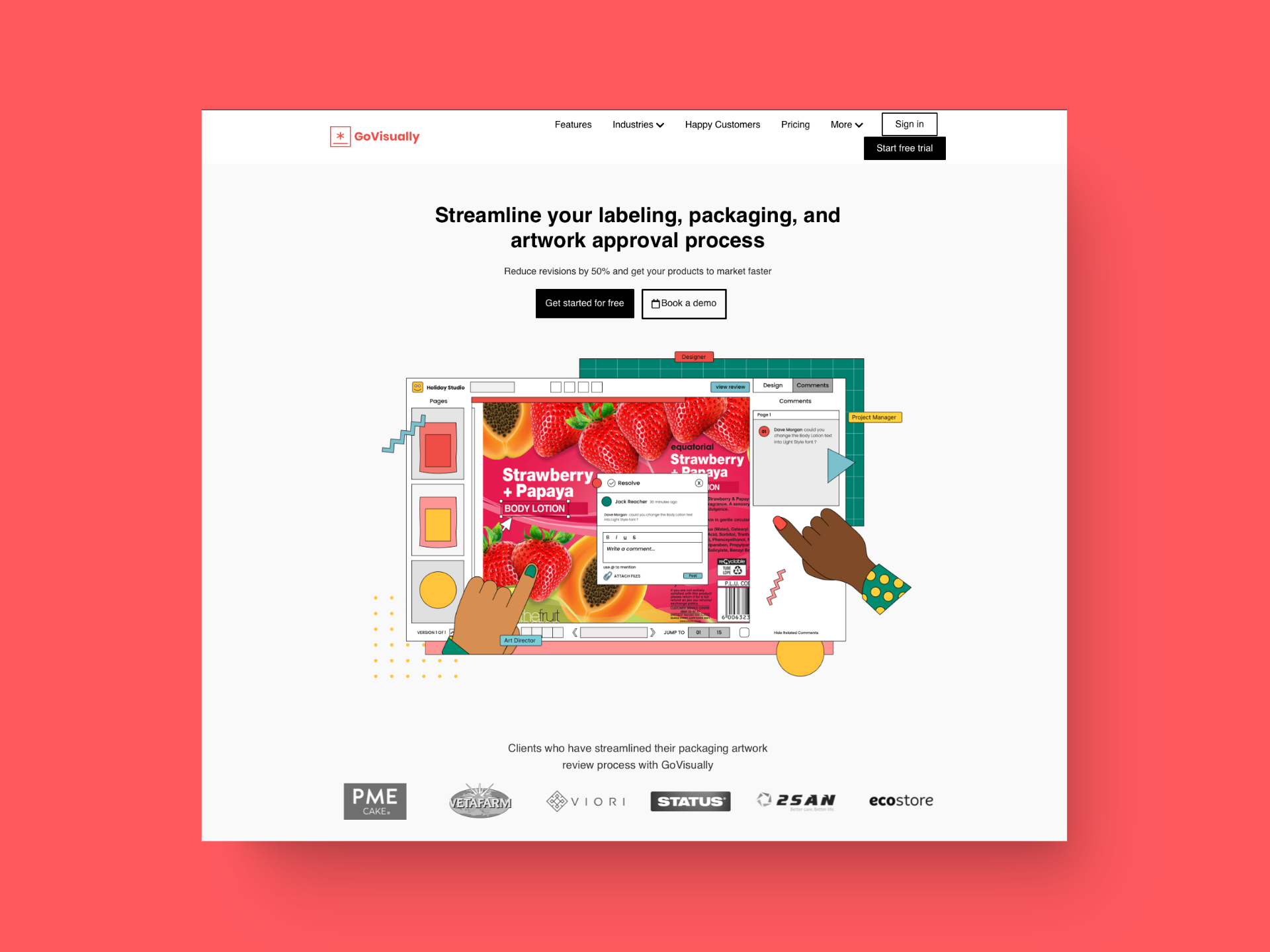
GoVisually even automatically cross-references labels against multiple regulatory databases. This helps you maintain accuracy across different markets and reduce the complexity of managing labeling requirements.
3. Increasing non-compliance costs
The price tag for messing up on compliance standards is high. Regulatory agencies are implementing harsher penalties for violations in areas such as labeling and packaging. We’re talking fines that could make your eyes water.
For corporations, these fines easily hit millions of dollars. For instance, in Canada, violations of packaging and labeling regulations result results in penalties of up to $15 million for companies, depending on the nature and frequency of the infractions.
These fines are just the tip of the iceberg. The long-term repercussions of non-compliance are even more damaging. Product recalls due to compliance failures lead to massive operational costs and lost revenue. And once word gets out that you’ve messed up, the damage to your reputation haunts your business for years.
Limitations of manual processes
Manual compliance processes are prone to errors and inefficiencies. Even the sharpest human reviewers can slip up when they’re drowning in data. This is particularly concerning not just from a compliance standpoint but also because 60% of consumers would likely reject a product with insufficient label information. That’s a lot of potential sales walking out the door!
AI spots and eliminates these risks by foreseeing potential issues and addressing them before products are released. It checks not just your list of ingredients, formatting, restricted words, or missing label elements but also helps fix these errors with better suggestions.
A recent study in the field of manufacturing quality control has shown that AI-driven label verification systems achieved an impressive 99.7% accuracy rate. In contrast, human reviewers typically managed around 90% accuracy. This 9.7% difference may seem small, but in large-scale operations, it means thousands of compliance violations.
Key features to look for in AI label compliance software
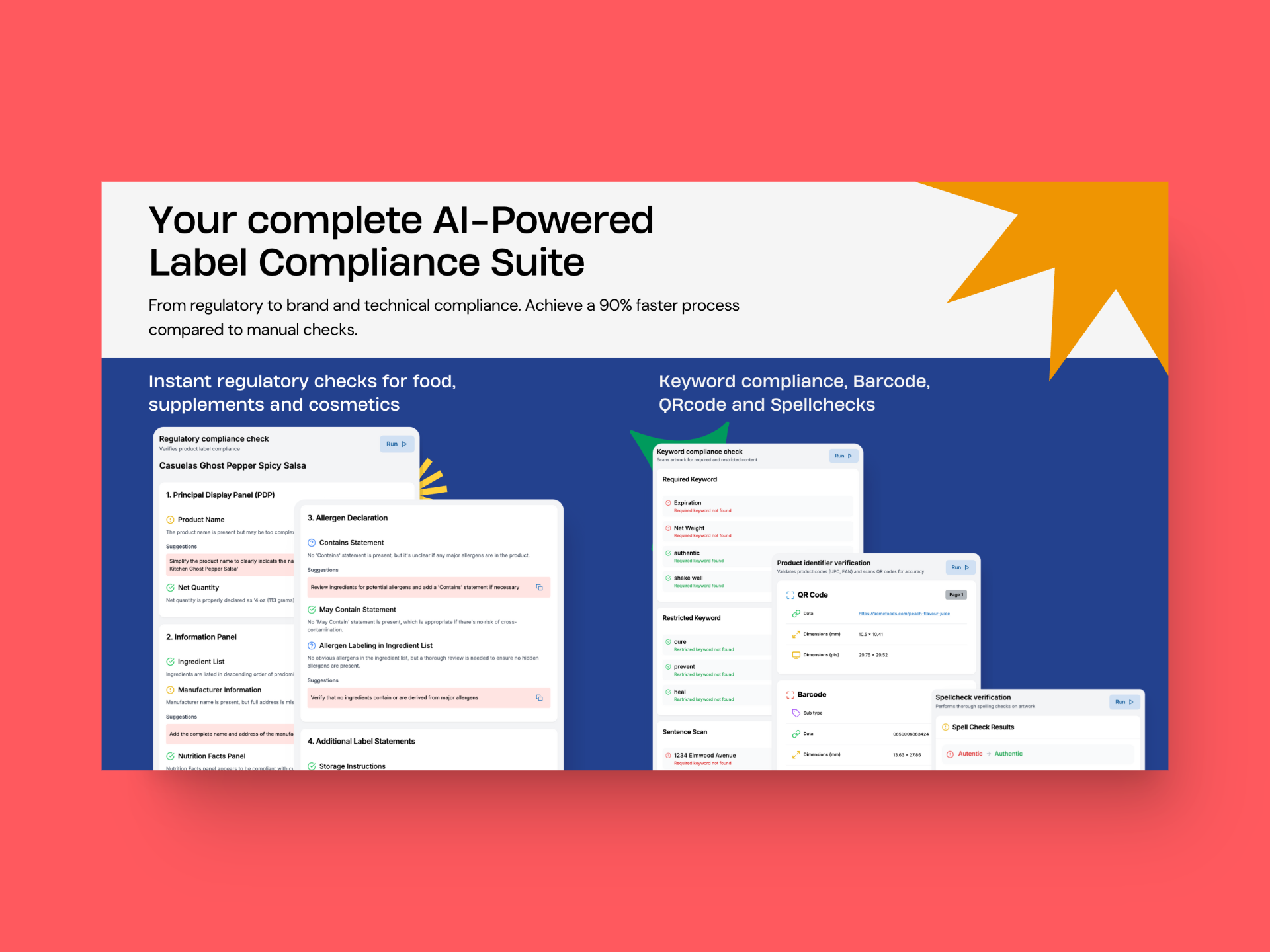
Not all AI compliance solutions are created equal. If you’re thinking about jumping on the AI bandwagon (and let’s be honest, you probably should be), here are a few things to keep an eye out for:
1. Automated regulation checks
You want an AI that can actually “read” your labels, understand what they’re saying, and check if it’s all up to the mark using advanced technologies like computer vision and NLP.
For food labels, for instance, it should be able to spot if you’ve listed allergens correctly or if you’re using terms like “organic” or “low-fat” the right way.
2. Current regulatory updates
Your AI tool should be able to keep up with rapidly changing regulations and automatically update its knowledge base.
For example, when the UK introduced post-Brexit labeling requirements, AI systems with quick updates helped companies rapidly adjust their compliance processes.
3. Integration with design and workflow systems
The AI should slot right into your existing label design setup. This way, you can catch any errors while you’re still in the design phase, saving you a ton of headaches down the line.
4. Data analysis and pattern recognition
A good AI system should analyze historical data to predict potential issues and identify trends. This could involve examining past compliance history to spot patterns in regulatory changes or common compliance failures in specific industries.
Key areas where compliance AI excels
The promise of AI in various forms is transforming an increasingly critical aspect of compliance management as it can be used to sift through huge amounts of complex data, look for trends, and make complex judgments.
1. Enhancing compliance accuracy
When it comes to risk management, compliance detection tools can achieve very high accuracy, even beating a compliance officer. This level of detail is especially important in fields like medicine, where even a slight mistake in what a patient is supposed to ingest can have fatal effects.
For example, labeling such as fonts, shapes, angles, or sizes can have errors that an AI system will pick up without failing, yet a human being may not even perceive them.
2. Regulatory intelligence
AI is very efficient in the monitoring and comprehension of changes in regulatory requirements within its different jurisdictions. Once new regulations have been announced or current UG regulations have been altered in some way, AI systems will update accordingly in no time.
3. Risk management
By analyzing past experiences and existing conditions, AI can foresee probable compliance challenges before they even happen. This allows companies to solve errors during the design process before they occur in a way that minimizes product recalls or disrupts regulatory compliance.
AI for label compliance workflow with GoVisually!
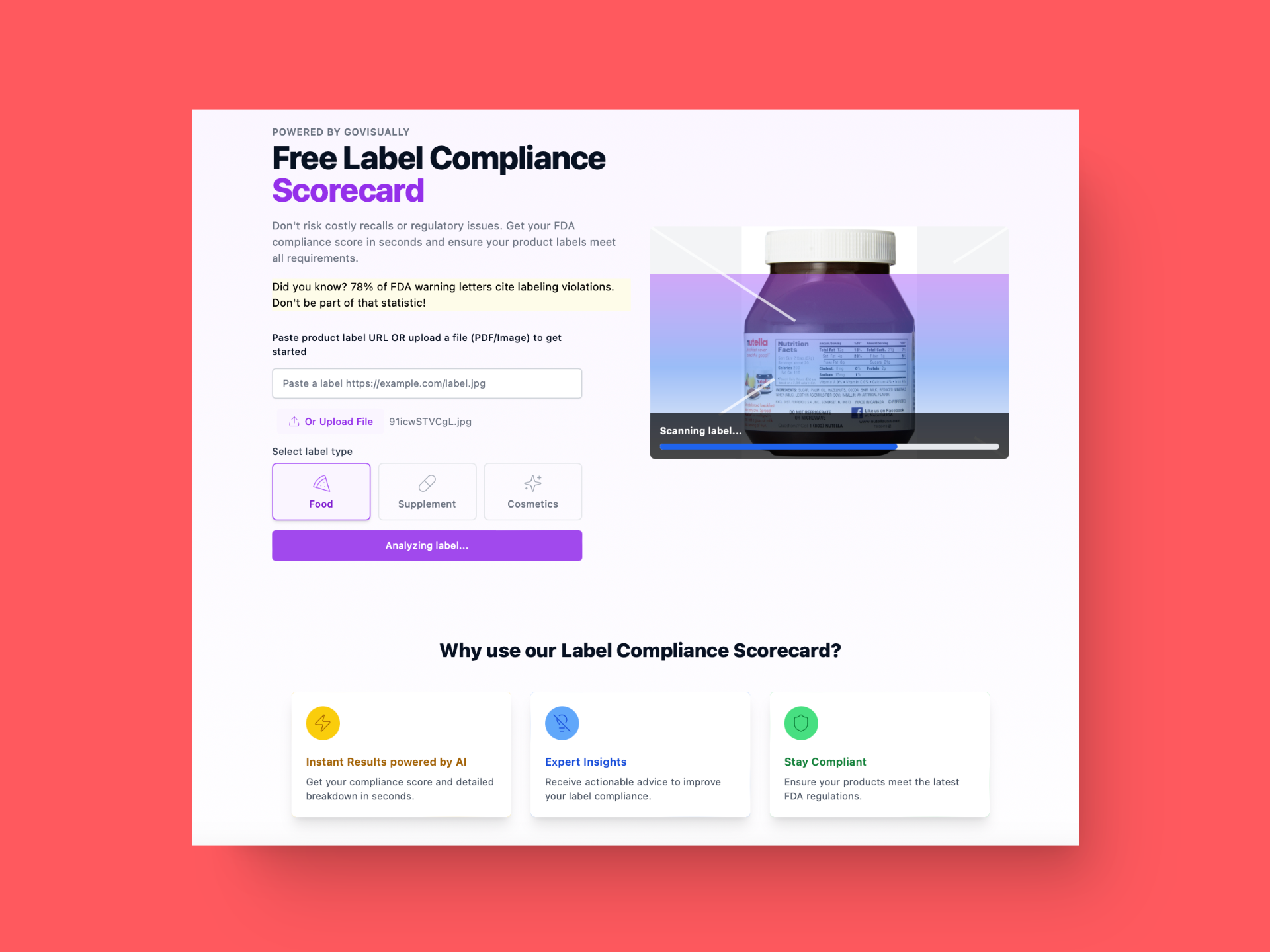
Although it varies according to the system or the industry, usually the compliance workflow has 3 main steps:
1. Design input: Designers upload label designs into the AI system for analysis
2. Regulatory database update
The AI system continuously updates its database with the latest regulations from relevant authorities like the FDA and EFSA. For example, recent changes to FDA 21 CFR Part 11, which governs electronic records and signatures, would be incorporated into the AI system to ensure compliance with the latest standards
3. Automated compliance analysis
The AI swiftly analyzes labels against relevant regulations based on the product type and target markets. This includes checking font sizes, mandatory warnings, ingredient lists, and nutrition facts formatting. The AI can perform tasks like verifying INCI (International Nomenclature of Cosmetic Ingredients) naming conventions for cosmetic products in seconds, significantly faster than manual review.
Introducing, GoVisually.
GoVisually’s compliance analysis goes a step further and offers comprehensive checks tailored to various industries.
It examines factors such as:
- Regulatory symbols and their placement
- Language requirements for multi-market products
- Barcode readability and placement
- Color contrast for readability
- Trademark usage and positioning
By automating these checks, GoVisually reduces label review time by up to 80% and allows teams to focus on more strategic tasks.
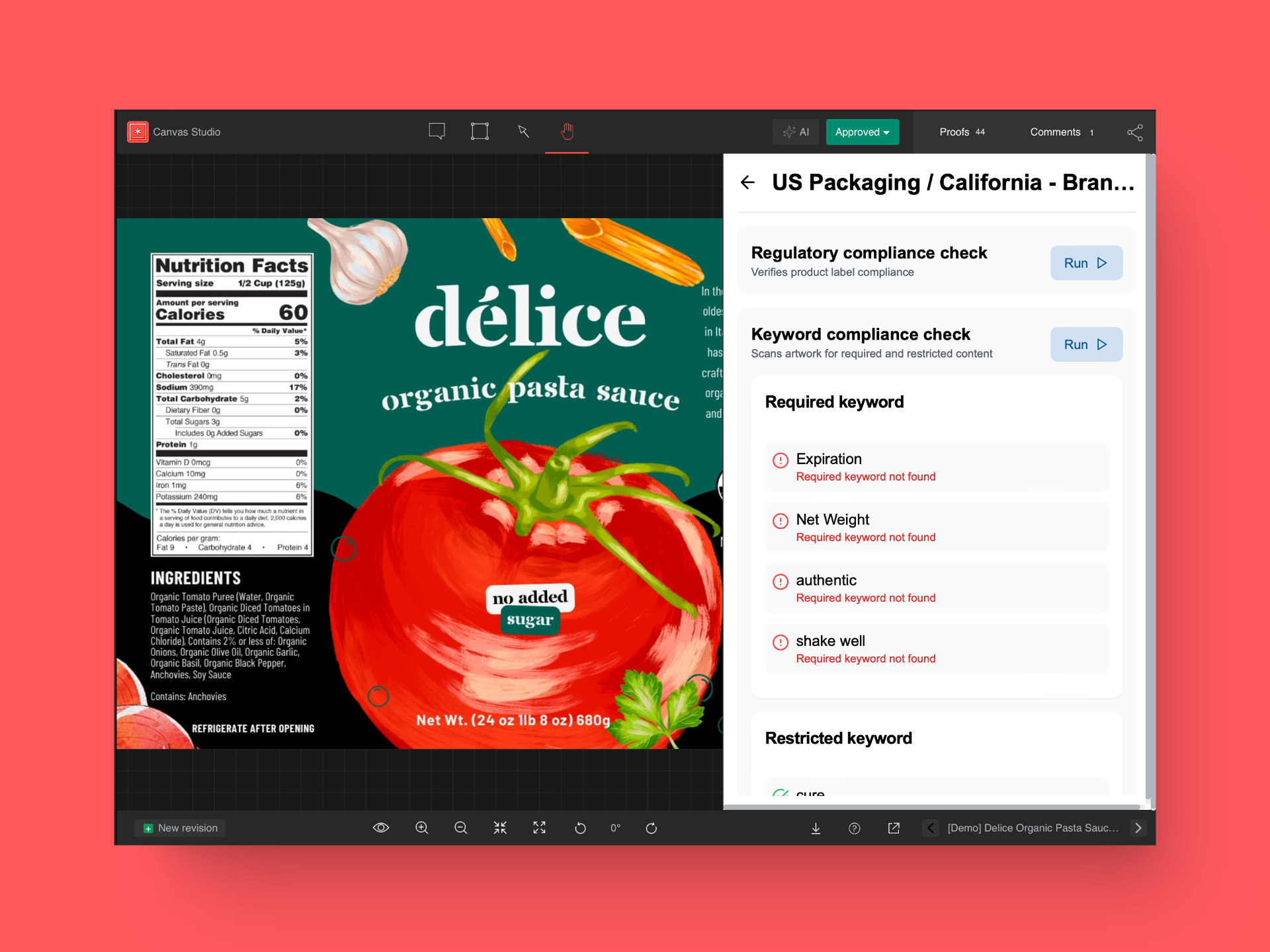
Here’s some other noteworthy features of GoVisually that makes it a no-brainer for AI compliance checks:
1. Multi-Market Compliance Checks: GoVisually simultaneously checks compliance for multiple target markets. It identifies discrepancies in requirements across different regions. For instance, it verifies if a food label meets both FDA and EU regulations for export products
2. Custom approval checklists: GoVisually ensure brand consistency and regulatory compliance with our customizable checklists. From logo usage to legal disclaimers, GoVisually’s smart checklists maintain brand integrity across all your marketing materials.
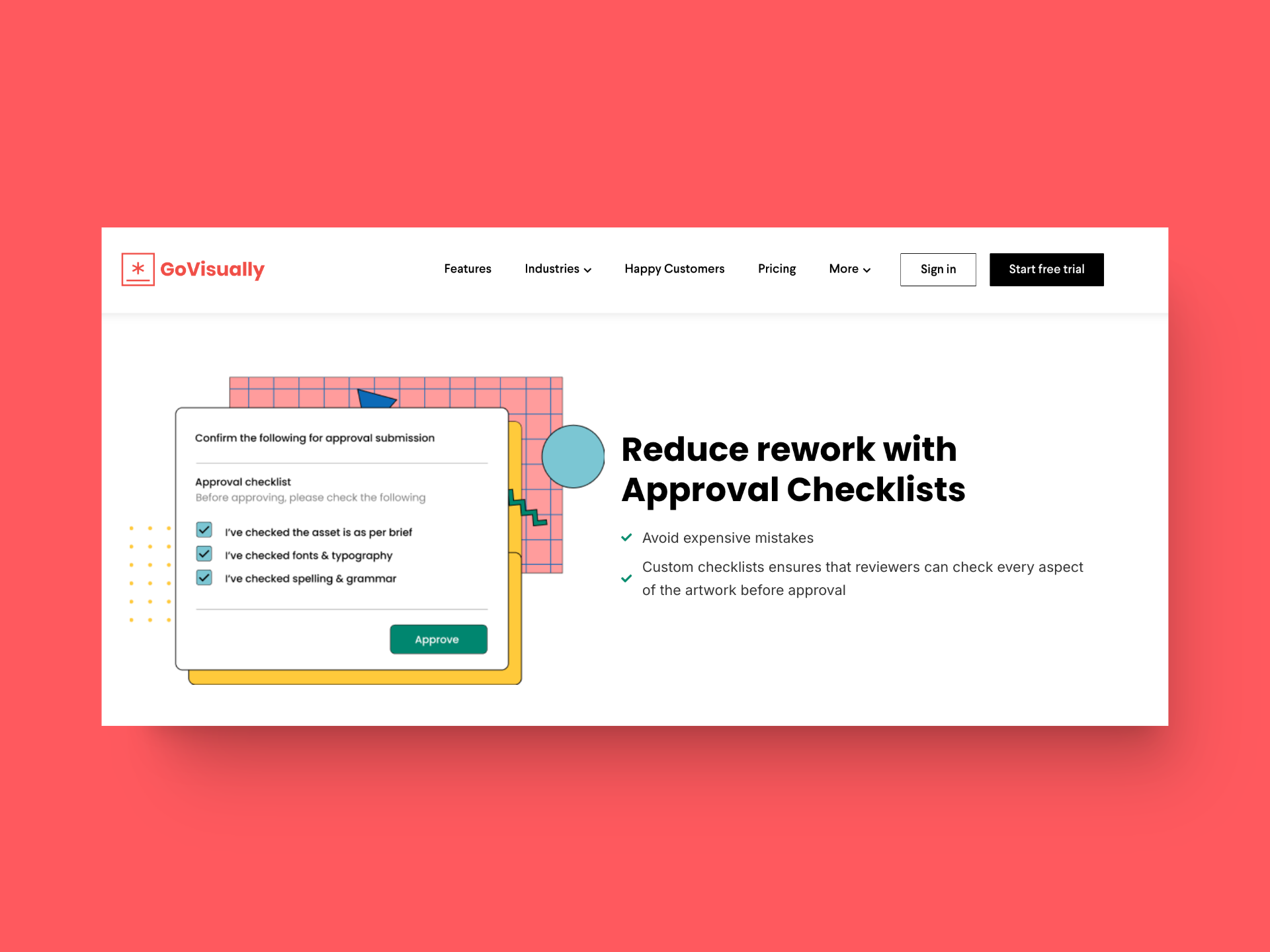
3. Keywords and scannable elements check: GoVisually allows you to scan and verify certain keywords and phrases that are either mandatory or restricted in certain product categories. This includes checking for approved health claims, allergen statements, and mandatory warnings.
4. Integration with workflow systems: GoVisually easily integrates with existing design and review processes and offers integration with 3000+ apps in just a single click. GoVisually’s workflow integration offers features like Adobe Creative Cloud plugins, automated routing, and customizable checklists.
5. Continuous learning and updating: GoVisually learns from each review, improving accuracy over time.Incorporates feedback from regulatory experts to refine its analysis
For example, the system learns to recognize new types of health claims and their regulatory implications.
6. Compliance report generation: This AI system produces detailed reports highlighting compliance issues and suggestions. It even includes regulatory citations and specific recommendations for corrections. For instance, it can generate a report indicating that allergen information needs higher contrast for EU compliance.
Measuring the impact of AI on label compliance
The implementation of AI in label compliance has led to significant improvements across various key performance indicators (KPIs).
One crucial KPI is the Compliance Accuracy Rate (CAR), which measures the percentage of compliant labels produced using AI compared to traditional methods. This metric directly reflects the improvement in compliance outcomes.
Other important metrics include Error Detection Rate, Review Time Efficiency, and First-Time Approval Rate, all of which typically show marked improvements with AI adoption. The Recall Incident Frequency often decreases as well, thanks to enhanced accuracy in compliance checks.
Long-term benefits of AI in label compliance:
AI-driven label compliance brings significant long-term benefits for brands. With more consistent and accurate labeling, companies can build stronger customer trust and loyalty. This technology also facilitates easier market expansion through adaptable compliance systems, improves product safety, and streamlines new product development processes. These factors collectively reduce risks associated with recalls and potentially lower liability insurance costs.
On top of that, implementing AI in label compliance frees up human resources for more strategic tasks and innovation. This shift allows companies to focus on high-value activities that drive growth and competitive advantage. As markets continue to evolve, businesses leveraging AI for compliance will be better positioned to adapt quickly and maintain a leading edge in their industries.
Future trends in AI for label compliance
1. Predictive Compliance
AI applications are set to revolutionize compliance by enabling businesses to foresee and prepare for regulatory changes.
Machine learning algorithms like Random Forests and Gradient Boosting will process historical data and current patterns, while Natural Language Processing models such as BERT examine news sources and policy documents.
2. Enhanced NPL (Natural Language Processing)
Advancements in NLP technology will significantly improve AI systems’ ability to analyze legal documents. This progress will reduce the need for human interpretation of laws and regulations.
Sophisticated language models like GPT-4, specifically trained for legal comprehension, will work alongside knowledge graphs representing legal concepts to better flag label non – compliance.
3. AI-driven sustainability compliance
As environmental regulations become more strict, AI will play a crucial role in meeting sustainability requirements. IoT sensors and edge computing devices will gather real-time data on environmental impacts. Cloud-based AI models will process this information, using reinforcement learning algorithms to optimize processes for minimal environmental impact.
These systems will manage complex eco-labeling requirements and automate product lifecycle tracking. This technological approach will not only ensure compliance but also drive innovation in sustainable practices.
Take the headaches off compliance checks with GoVisually
AI-driven label compliance is transforming the industry by significantly reducing errors, accelerating time-to-market, and enhancing multi-jurisdictional compliance.
For those seeking to harness these benefits, GoVisually offers a comprehensive solution. With features like streamlined workflows and seamless Adobe Creative Cloud integration, GoVisually accelerates the time to market by 50%, and achieves a 90% faster process compared to manual checks.


